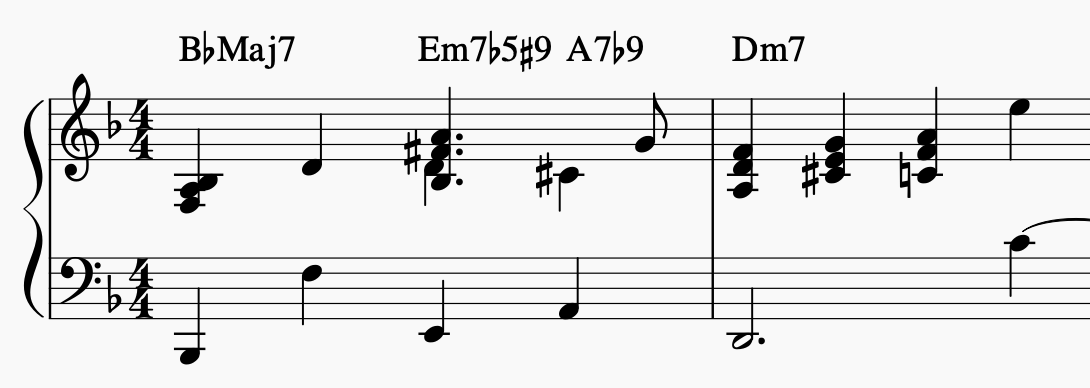The Pippinpotato Corner All things pippin and potato
Reharmonizing 2-5-1s with Slash Chords
2 minute read

I was looking at a transcription of Bill Evan’s “Lucky To Be Me” from his album Everybody Digs Bill Evans when I came across a funny looking chord.
The chord in question is the Em7b5#9 chord below and occurs around the 0:13 minute mark.

The transcription (credits to RHTranscriptions) lists the chord as Em7b5#9, but it isn’t. Chords are mainly defined by the shell, and there is a D but no G in this voicing. This voicing can also be named the slash chord Bb+Maj7/E, but slash chords usually represent a valid underlying chord based on the root. I couldn’t figure out how this could be a valid chord based on E. After a while of puzzling why Bill Evans would play this voicing, I thought of a system that Bill Evans might have been using to come up with this voicing. But after coming up with the system, I realized that this was just an Esus7#11 chord all along, making it a valid chord. However, I think the system I was thinking of could still be of use for cool reharmonizations of 2-5-1 progressions.
The system is essentially using slash chords to reharmonize the top chords while keeping the root movement the same.
I thought Bill Evans was reharmonizing the top chords by approaching the A with Bb, the note half-step above, rather than E, and that that’s how he arrived at the slash chord Bb+Maj7/E. I tried playing the same progression with top chords of different reharmonizations and found that they all sounded pretty good. Here are some examples to show what I mean:

You keep the nice root movement of 2-5-1, but get more interesting tensions through the reharmonizations in the top chords. Notice how I’m approaching A7b9 with a different top chord each time.
Here are some more examples of this reharmonization being done with the tune “There Will Never Be Another You.”
Original:

Reharmonizations:


